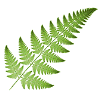 Things that moveWe tend to take for granted the plants that cover much of the land surface of our planet, supporting the varying tapestry of species and diversity. Even in the deserts of central Australia there are endless subtleties of plant life in the landscape. They provide the backdrop to everything that goes on. But plants are something we have grown up with, that most of us seldom notice. When I was younger, one of my pastimes was bushwalking. It has different names in other places, but in every case it means hiking through more or less wild landscapes. As a bushwalker, I noticed the things that moved - the lizards, the snakes, the birds and mammals. I recall one time we'd been camping by a creek in the Flinders Ranges. I went down to the water's edge for a drink, just after dawn. I looked down to see a Copperhead Snake next to me. It too was drinking from the creek, its exquisite blue-green head and finely marked scales sharp in the early morning light. Though it was quite poisonous, it didn't bother me, and I left it in peace. It belonged there and I had no reason to intrude. In other places while walking, I would notice the rocks and - from time to time - the fossils they contained. I remember vividly seeing an imprint in the sandstone of seafloor ripples, from some long-vanished inlet in an ancient pre-Cambrian sea. Half a billion years later, now hundreds of miles inland, it is high in the mountains. But I seldom gave much thought to the plants. I noticed the trees as they changed from one dominant type to another as I travelled, but they were just trees. I don't remember even noticing the other plants, except perhaps the desert wildflowers. Certainly I paid no heed to the ferns or mosses. A Total Eclipse of the SunThen one day in 1976 I was with a group of people on an expedition to observe a total eclipse of the sun. The path of the eclipse passed over the wilds of East Gippsland. Wilderness with temperate rainforests. We were concerned about high cloud approaching from the west, so we set out to find a place where we could see the diminishing sun more clearly. Driving along winding bush roads, through the gathering gloom of the eclipse, trying to outrun the clouds, was a eerie process. Then the time ran out. The total eclipse was approaching. We stopped in a clearing in the rainforest, the sun a thin crescent in the sky between the high forest tops. We set up our telescopes and cameras and waited for totality. The birds went quiet, as is their wont in an eclipse. The air chilled, and the moon covered the sun's face, leaving a faint pearly ring in its place. Around the edge of the clearing, beneath the tall trees, clustered dozens of tree ferns, crosiers unfurling into the leafy darkness. Primordial. It was as if we had been transported back in time to the Mesozoic. A pterodactyl would not have seemed out of place there. After the sun crept back and the day recommenced, I looked closely at the tree ferns. I think it was the first time I had actually looked at a fern with interest. I knew from my school days that they grew from spores, but I had no idea what a spore looked like, nor where to find one. My ignorance was boundless. But, though I didn't know it, I was hooked. As if on purpose, a week later, I was browsing in a bookshop and came across the newly published Australian Ferns and Fern Allies by David Jones and Stephen Clemesha. It nourished my curiosity and has led to an abiding interest. Now, when I walk through the Bush, while I may still see the snakes and lizards and the other things that move, I pay particular attention to the plants - from the towering Mountain Gums to the smallest fern. Things have changed. FootnoteOne of the other people on that expedition to Gippsland was my brother. He too became fascinated by ferns. So these Web pages can be directly traced back to that solar eclipse. |